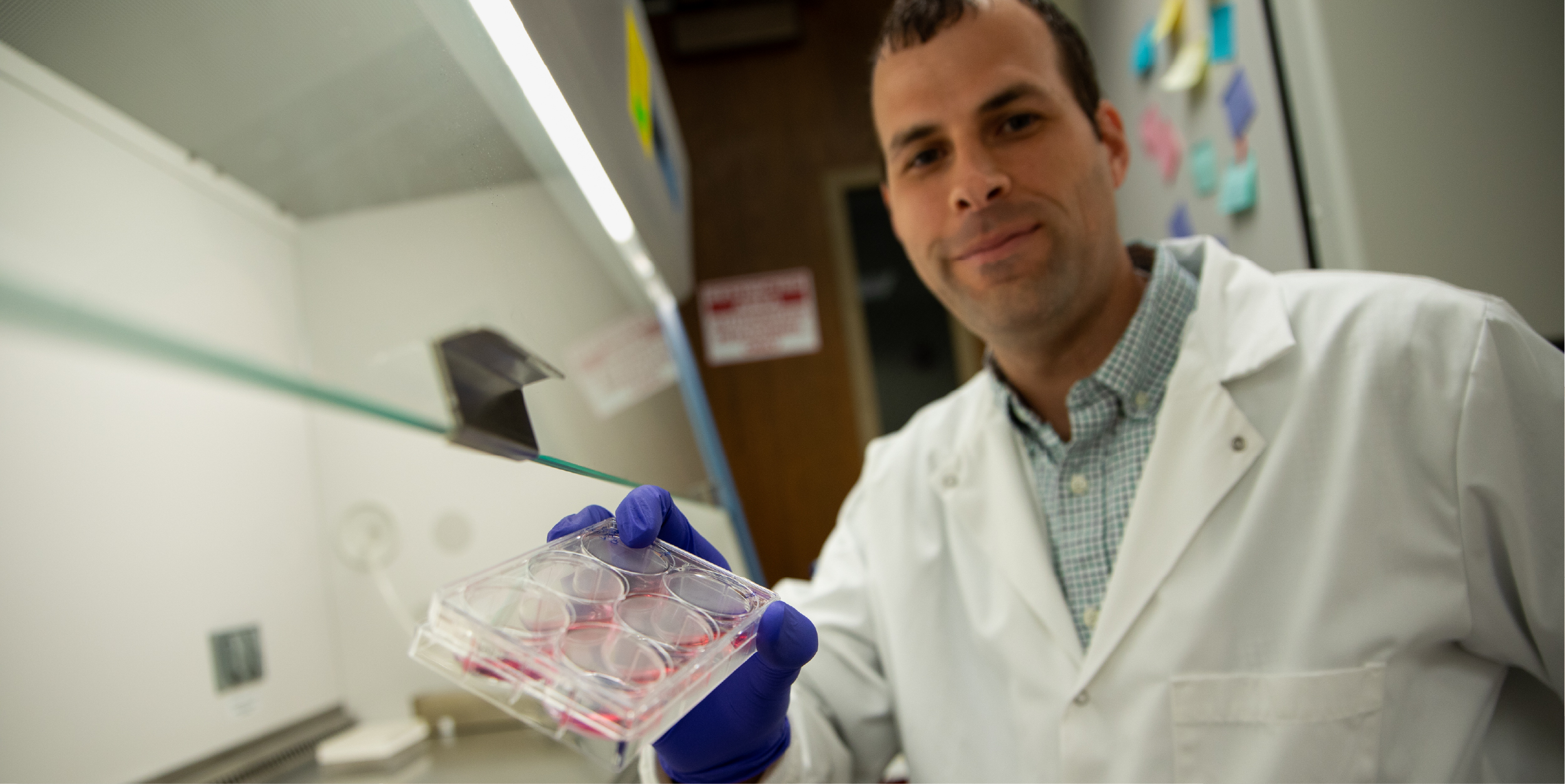Purdue team uncovers how a rare cancer changes the identity of cells
09-18-2025

When cells in the body stop following the rules, cancer can take hold.
A Purdue University research team led by Jason Hanna, professor of biological sciences, has discovered how a rare form of vascular cancer, epithelioid hemangioendothelioma (EHE), does exactly that—by forcing healthy blood vessel cells to change into a more aggressive type.
The findings, recently published in Molecular Oncology, shed light on how a genetic glitch pushes cells to abandon their normal role and take on new behaviors that help cancer spread.
“This research helps us understand what makes these tumors tick,” Hanna said. “By learning how the gene fusion drives changes in cell identity, we can begin thinking about treatments that target the process directly.”
A rare cancer with unique drivers
EHE is caused by unusual genetic events where two separate genes fuse together. One version of this fusion involves genes called YAP1 and TFE3. Until now, little was known about how that fusion alters cell behavior.
Hanna’s team recreated the gene fusion in the lab using blood vessel cells. Instead of continuing their normal role of lining blood vessels, the cells morphed into a more mobile, flexible type—traits that can help cancer spread through the body.
Students at the heart of discovery
Undergraduate researchers played a central role in the project, working side by side with graduate students and Hanna. They helped carry out lab experiments, analyze data, and discuss the meaning of results.
“Purdue students are not only learning science from textbooks—they’re contributing to discoveries that could one day change how we treat cancer,” Hanna said.
For many of the students involved, this was their first experience publishing research in an international journal.
A step toward tailored treatments
The study also revealed that tumors driven by the YAP1::TFE3 fusion behave differently from those caused by other gene fusions linked to EHE. That means patients may eventually benefit from treatment strategies tailored to the specific genetic driver behind their tumor.
“This is a rare cancer, but it shows us something bigger—that understanding the exact genetic cause of a tumor matters,” Hanna said. “It could point the way to treatments that are much more precise.”
Looking ahead
The team plans to continue studying how the fusion protein alters cell function and to explore whether blocking key parts of that process could be an effective therapy.
For Hanna, the work highlights the power of combining curiosity-driven research with student involvement.
“Cancer research is a long road,” he said. “But discoveries like this, where we learn how these tumors take shape at the cellular level, give us a foundation for the next step.”
About the Department of Biological Sciences at Purdue University
The Department of Biological Sciences is the largest life sciences department at Purdue University. As part of Purdue One Health, we are dedicated to pioneering scientific discoveries and transformative education at the cutting edge of innovation. From molecules to cells, from tissues to organisms, from populations to ecosystems - we bring together multiple perspectives, integrating across biological scales to advance our understanding of life and tackle the world’s most pressing challenges. Learn more at bio.purdue.edu/.
Writer: Alisha Willett, amwillet@purdue.edu
Source: Jason Hanna, hannaja@purdue.edu